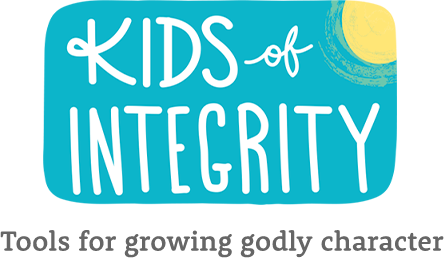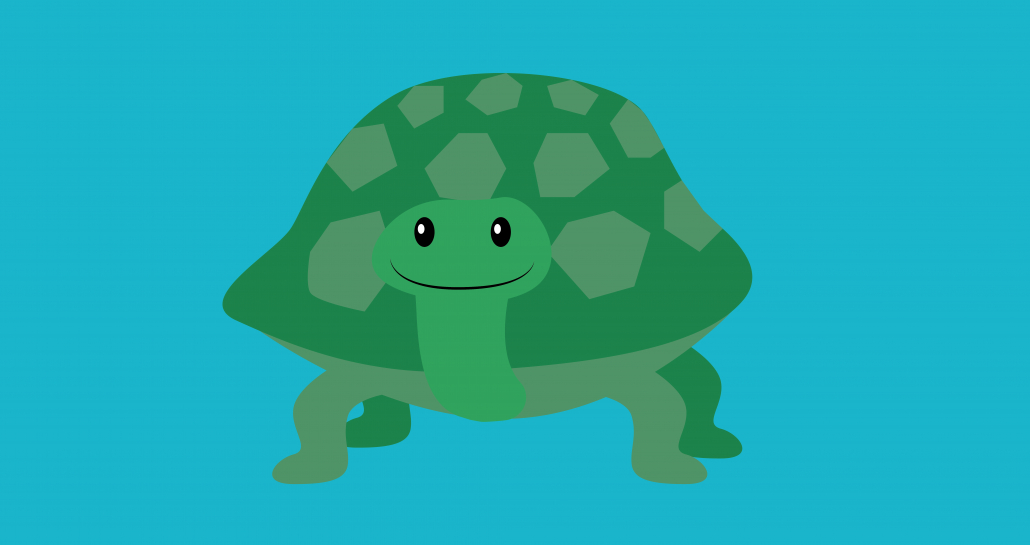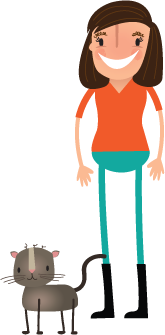Responsibility
Choose from five different mini-lessons that emphasize being responsible consumers who care for the environment and for wildlife.
You can choose just one of these activities, or do all five in succession if you wish.
As you complete the activities, talk with your children about our God-given responsibility to rule over the earth (Genesis 1:26). Explain that when we are wasteful with resources or when we create excess garbage, we are not caring for the world God made.
To expand the spiritual component, read Psalm 8:1-9 and thank God for the honour of being named rulers of the things God made on the earth. Ask Him to help you live wisely, caring for all He has given you. Thank Him for your clean water supply and for a reliable source of electricity. Thank Him, too, for allowing you to live in a land of plenty and ask Him to teach you not to be wasteful or thoughtless in the way you use your resources and treat the environment.
Relevant Scripture
Psalm 8:1-9 “O Lord, our Lord, how majestic is Your name in all the earth! You have set Your glory above the heavens. Out of the mouth of babies and infants, You have established strength because of Your foes, to still the enemy and the avenger. When I look at Your heavens, the work of Your fingers, the moon and the stars, which You have set in place, what is man that You are mindful of him, and the son of man that You care for him? Yet You have made him a little lower than the heavenly beings and crowned him with glory and honor. You have given him dominion over the works of Your hands; You have put all things under his feet, all sheep and oxen, and also the beasts of the field, the birds of the heavens, and the fish of the sea, whatever passes along the paths of the seas. O Lord, our Lord, how majestic is Your name in all the earth!
”
Paper vs. plastic
Run this simple, week-long experiment to teach your kids what the word “biodegradable” means. (A simple definition they can learn is “to break down and become part of the soil.”)
To set up your experiment, simply take a portion of a paper bag, and a portion of a plastic grocery bag, and lay them in warm water on a cookie sheet or plastic tray.
Check on your experiment over the course of a week to see what is happening. (The paper will be disintegrate, but the plastic will remain unchanged.)
Key concepts
When we dispose of our garbage, it is taken to a landfill. Any paper bags in the garbage break down quickly and become part of the soil, but plastic bags don’t.
Plastics never “biodegrade” or go away entirely. The plastic we put in the garbage will eventually break down into smaller and smaller pieces of plastic, but it is never gone. Sadly, an increasing amount of plastic is ending up in the world’s oceans. In the water, as the plastic breaks into smaller and smaller particles, animals begin eating these plastic particles instead of plankton. Over time, the animals are harmed by eating plastics instead of nourishing food.
The good news is that every person can make a difference by using biodegradable or re-useable containers instead of plastic. Here are some helpful things people can do. Which ones do you think we should do as a family?
- Bring reusable bins or bags to the grocery store for our groceries.
- Ask for paper bags or boxes for our groceries instead of plastic bags, if we forget to bring our own bags.
- Use wax or parchment paper instead of plastic wrap in the microwave.
- Use re-useable containers and bags for lunches and snacks.
- Store food in containers with re-sealable lids instead of plastic wrap.
- Stop buying polystyrene or plastic plates and cutlery for parties and picnics.
- Buy products that are not wrapped in plastic whenever possible.
Pollution and seepage
When garbage is buried in a landfill, some of the garbage leaks pollutants into the environment. This simple experiment helps kids understand the idea of underground seepage of pollutants.
You will need sand, water, a large glass jar, tongs, five paper napkins and food colouring in yellow, blue, red and green.
- To begin, soak each napkin in food colouring to make one yellow, one red, one blue and one green napkin. Create a brown napkin too by mixing drops from all four food colourings together.
- Fill the jar 1/6 full with sand. Add just enough water to saturate the sand.
- Next, use the tongs to place one of the coloured napkins in the jar. Cover it with wet sand, then add another napkin.
- Continue layering the sand and napkins until all the napkins are covered in sand.
- Observe the sand over a few hours, watching where the coloured water goes.
Key concepts
Much of the garbage we make is hauled away and buried in a landfill. But that doesn’t mean it’s gone. Even buried garbage can harm the environment and animals. Just as we saw the coloured water seep into the sand, the same thing happens in landfills. The pollutants in the buried garbage seep out of the landfill and into the water under the surface of the soil. These pollutants eventually end up in our lakes, rivers and oceans where they can harm the animals living there.
Fortunately, there are some things we can do to help. Which of these “seepage stopper” ideas do you think we could do as a family?
- Buy soaps and detergents that are environmentally friendly and phosphate free.
- Dispose of paints, solvents and aerosol cans by taking them to special toxic waste disposal sites. Contact friends and neighbours and offer to take theirs too.
- Take prescription medicine back to a pharmacy where it will be properly disposed of.
- Do the “double check” before throwing an item in the garbage. The double check is to ask two questions: Where will this end up? and Can this be reused or recycled? The many items that can be recycled include cardboard, paper, plastic, glass and sometimes polystyrene too.
- Ask our municipality to start curbside pickup for recyclables and compostable material.
Note: You can expand this activity by setting up your own family recycling bins. Run a one-week trial to see how much your household garbage is reduced when all paper, cardboard, plastics, cans and organic matter are removed for recycling.
You may also want to visit a landfill and a recycling depot as a part of this learning experience. The sight and smell of tons of garbage will make a lasting impression on your children. On the other hand, visiting a recycling station illustrates the positive side of waste management. Excellent video footage is also available online.
Littering
Once, in the Florida waterways, an environmentalist named Stephen Nordlinger rescued a turtle that had eaten so much polystyrene it was too buoyant to submerge underwater. In this object lesson you’ll simulate the experience of the rescued turtle, to illustrate for kids the danger litter poses to wildlife.
You will need a re-sealable plastic sandwich bag for each child, permanent markers and chunks of polystyrene.
It’s easiest to do this activity at bath time, but you can also do it at the kitchen sink or in a tub of water.
- First, draw the outline of a turtle on each plastic bag, with the turtle’s mouth at the opening of the bag.
- Seal each bag tightly, and let your kids make their turtles “swim” underwater in the bathtub.
- Next, sprinkle small chunks of polystyrene on the water.
- Have your kids make their turtles “eat” the polystyrene chunks, taking them into the bag. (They may need your help to “feed” the turtles, to ensure as little water as possible gets into the bags.) Help your kids realize that, eventually, their “turtles” can no longer stay submerged under the water.
Key concepts
The litter that people throw on the ground is often dangerous for wildlife. Animals can cut their paws on broken glass, for example. And the litter doesn’t always stay where it’s thrown. It often gets washed into streams and rivers, and then out to sea.
It’s common for water birds and aquatic animals to get tangled in plastic garbage, particularly discarded fishing line and plastic six-pack beverage rings. Once entangled, animals are easy prey for predators, or can starve to death.
Sometimes animals mistake litter for food. Sea turtles, for instance, often mistake plastic bags for jellyfish, and polystyrene pellets for the eggs of sea life, stuffing themselves with this “junk food” until they are weak and starving. And sometimes, like we saw with our plastic-bag turtles, it can prevent them from swimming underwater to catch their real food.
Here are some ways people can make sure wildlife doesn’t suffer this way. Which of these do you think should we start doing as a family?
- Pick up litter when we see it. (People are more likely to litter if they see litter on the ground already.)
- Take part in a community clean-up day.
- Always take a bag when you’re out for a walk, to collect trash along the way.
- Keep a garbage bag in your vehicle so you want be tempted to throw garbage out the window.
- When picnicking or hiking, use reusable water bottles, dishes and cutlery. For the rare times you must use disposable dishes, choose plates made from paper.
- Recycle all plastics and polystyrene. Research the options for recycling these in your community.
Natural resource conservation
Begin by talking with your kids about where tap water comes from and how electricity is generated. To help, look for videos online, or check out your library.
Next, try to go for an hour at home without using any water or electricity! Use this time to talk about how much harder life is for the many people in the world who do not have access to electricity and clean water.
Explain that there is an environmental cost to using electricity and water, then do a room-by-room tour of your house and ask your kids to suggest ways that water and electricity can be conserved in each room.
Key concepts
Becoming aware of our wasteful habits is a key step in reducing the thoughtless use of water, electricity and other natural resources. In our house we can conserve water and electricity by:
- Running the dishwasher only when it is full.
- Putting the plug in the sink while washing dishes, instead of continually running the tap.
- Running water only when you really need it when brushing your teeth or washing your face.
- Recycling water that’s still useful by watering plants with it.
- Turning off lights when you leave a room.
- Having short showers and installing low-flow shower heads.
- Having “party baths” (i.e. sharing the bathtub).
- Installing a low-flow toilet.
- Watering plants and grass in the early morning or late evening so less water evaporates, or xeriscaping our yard so less watering is needed.
Bugging everyone
Reinforce what you’re learning about caring for the environment by designating family members to watch for ways you can be more responsible.
To help, craft special bug badges. Much like sheriff badges, they give the wearer authority to politely “bug” other family members about being responsible.
Here are some ideas for crafting an electricity bug, water bug, anti-litter bug, recycle bug and a buy-less bug. Attach each bug to clothing with a safety pin to remind family members of their role for the day.
You will need craft foam or construction paper in an assortment of colours, safety pins, felt-tip markers, a glue gun and a few pennies.
- For the electricity bug, cut bright yellow lightning stripes for its back.
- For the water bug, colour it blue with spots shaped like water drops.
- Craft the recycle bug from old toy parts, jewelry, paper clips etc.
- Craft the anti-litter bug from common litter items such as a disposable drink lid, drinking straws and candy wrappers.
- Cut the compost bug’s body in the shape of a leaf and decorate it with raisins or dried cranberries for spots, or cut thin strips of dried mango.
- For the buy-less bug, craft a red ladybug with coins for spots, since ladies often do like shopping!
- Acceptance
- Adaptability
- Attentiveness
- Christmas
- Compassion
- Confidence
- Consideration
- Contentedness
- Cooperation
- Courage
- Courtesy
- Discernment
- Easter
- Faithfulness
- Forgiveness
- Generosity
- Gentleness
- Gratitude
- Harmony
- Honesty
- Humility
- Joy
- Kindness
- Obedience
- Patience
- Perseverance
- Respect
- Responsibility
- Reverence
- Righteousness
- Self-control
- Thanksgiving


